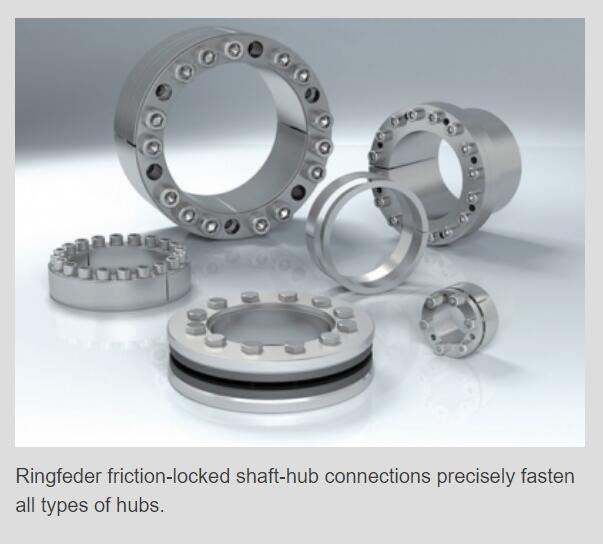Welcome to Sino Bearings web
24x7 HOTLINE:+86-28-81454188

 NEWS
NEWS
Ringfeder offers many types of Locking Assemblies. These friction-locked shaft-hub connections precisely fasten all types of hubs. They can also bridge relatively large fit clearances and are easy to install, adjust and remove. The following is a breakdown of the differences between the various models of Locking Assemblies:
Standard Model Differences: 7013
On the 7013.0 model, the flange of the inner ring has a slightly smaller diameter compared to the outer diameter of the Locking Assembly — a design that is completely inserted in the mating hub. When tightening the screws of the Locking Assembly during installation, the hub will move axially toward the screw heads. The .0 design is a more popular type, as the small amount of axial movement is usually fine. Because it’s completely inserted in the hub, this design also creates a more compact design since the screws and flange don’t stick out from the hub.
On the 7013.1 model, the flange of the inner ring has a diameter that’s larger than the outer diameter of the Locking Assembly, and the flange butts up against the face of the mating hub. When tightening the screws of the Locking Assembly during installation, there is no axial movement when positioning is critical.
Standard Model Differences: 7015
The 7015.0 Locking Assembly enables the maximum amount of torque for the design. The 7015.1 model has a lower torque and applies less contact pressure to the mating shaft and hub so as not to yield or break the mating hub. As a result of these features, this design is ideal for applications where the hub is thinner or the hub material isn’t very strong.
Standard Model Differences: 7012
The standard 7012 is the most popular model for most applications. On the 7012.2 model, Ringfeder optimized the stress profile of the rings to withstand the high demands of bending moment applications. Compared to the base 7012 model of the same size, this version has less screws, reducing the stresses in the Locking Assembly. In addition, they use screws with a special, corrosion-resistant material that makes them stronger than commercial grade screws. Without this special design, the locking device can easily become damaged during the bending cycles over time.
Learn More About Locking Assemblies
No matter the model, Locking Assemblies join shaft components by making 360-degree contact with the shaft and its mating component. These components are characterized by their backlash-free nature, even distribution of forces and elimination of failure-prone keyways. The standard shaft diameters range from 6 to 1,000 millimeters (metric) and from 3/4 to 8 inches (imperial). We also offer inch sizes for our 7515, 7013.0, 7013.1, 7012, 7006, 7005 and 7003 models.